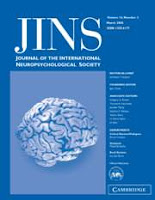

FASD is a window through which to view the state of our world. While it has a profound impact on individuals, families and all aspects of society, it is also a stimulus for change. This international conference will provide a forum to discuss and examine current research, policy and practice that will assist parents, caregivers, service systems and governments as they strive to prevent FASD and to provide a range of supports for people living with it. The emphasis of this conference will be the practical application of various forms of research covering these broad areas:
Biomedical
Clinical Diagnosis & Assessment
Health
Legal, justice, correction
Social Services
Family
Education
Community
Läs mer >>>
_________________________________________________












 Newswise — In a study on fetal alcohol syndrome, researchers were able to prevent the damage that alcohol causes to cells in a key area of the fetal brain by blocking acid sensitive potassium channels and preventing the acidic environment that alcohol produces. The cerebellum, the portion of the brain that is responsible for balance and muscle coordination, is particularly vulnerable to injury from alcohol during development.
Newswise — In a study on fetal alcohol syndrome, researchers were able to prevent the damage that alcohol causes to cells in a key area of the fetal brain by blocking acid sensitive potassium channels and preventing the acidic environment that alcohol produces. The cerebellum, the portion of the brain that is responsible for balance and muscle coordination, is particularly vulnerable to injury from alcohol during development.






 The WHO, in a press release summarizing the results of the assembly, recognized that work needed to be intensified to "curb the harmful use of alcohol" which is the fifth leading risk factor for death and disability in the world.
The WHO, in a press release summarizing the results of the assembly, recognized that work needed to be intensified to "curb the harmful use of alcohol" which is the fifth leading risk factor for death and disability in the world.
















 Measuring the levels of FAEE in an infant's first bowel movement could be a useful method for identifying children at risk for FAS, which may make early intervention possible.
Measuring the levels of FAEE in an infant's first bowel movement could be a useful method for identifying children at risk for FAS, which may make early intervention possible.

 Welcome to the Tools for Success Curriculum: Working With Youth With Fetal Alcohol
Welcome to the Tools for Success Curriculum: Working With Youth With Fetal Alcohol
 These results, which indicate that, although executive function deficits occurred in both clinical groups, the degree and pattern of deficit differed between the ALC (alcohol exposed group) and ADHD groups, may improve differential diagnosis. (JINS, 2008, 14, 119–129.)
These results, which indicate that, although executive function deficits occurred in both clinical groups, the degree and pattern of deficit differed between the ALC (alcohol exposed group) and ADHD groups, may improve differential diagnosis. (JINS, 2008, 14, 119–129.)

